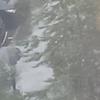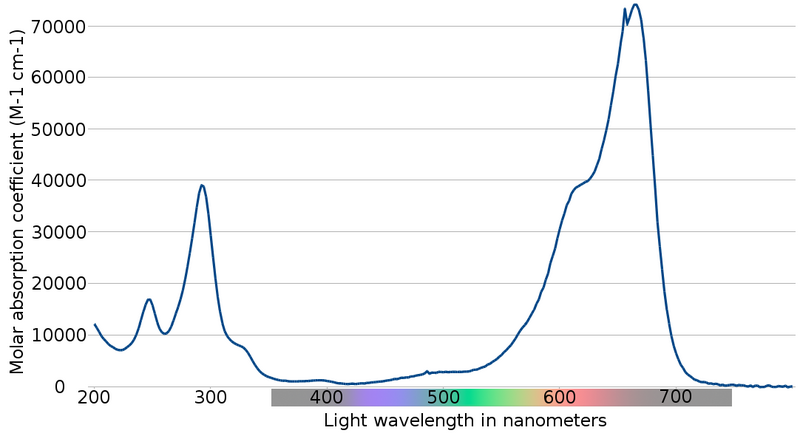Has a con census been reached on the compatibility of the aforementioned supplements? I like lllt, and I've seen discussions of it used with MB, as well as one negative report with c60 and lllt (with NFB I recall), and it looks like c60 shouldn't have a problematic reaction as long as the usual frequencies are used, but what about all three? Or c60 with MB? I'm using tfse, but it is slow going on a phone, and the relevant data is probably buried in the labyrinthine lf thread...

concurrent methylene blue, LLLT and C60
#1
Posted 25 December 2014 - 08:53 AM
Has a con census been reached on the compatibility of the aforementioned supplements? I like lllt, and I've seen discussions of it used with MB, as well as one negative report with c60 and lllt (with NFB I recall), and it looks like c60 shouldn't have a problematic reaction as long as the usual frequencies are used, but what about all three? Or c60 with MB? I'm using tfse, but it is slow going on a phone, and the relevant data is probably buried in the labyrinthine lf thread...
#2
Posted 28 December 2014 - 05:39 AM
"Here, we show that certain functionalized fullerenes, including polyhydroxy fullerenes (which are known to be environmentally safe7, 8 and to have therapeutic properties9, 10, 11) are heated or ignited by exposure to low-intensity (<102 W cm−2) continuous-wave laser irradiation. We also show that polyhydroxy fullerenes and other functionalized fullerenes can be transformed into single-walled nanotubes, multiwalled nanotubes and carbon onions without the presence of a catalyst by exposure to low-intensity laser irradiation in an oxygen-free environment. To demonstrate the potential usefulness of these processes in applications, we disrupted animal cells dosed with polyhydroxy fullerenes by exposing them to a near-infrared laser for a few seconds, and also ignited an explosive charge in contact with a particle of carboxy fullerenes."
However my personal experience with 904nm very high wattage laser while fully c60 oo dosed was without such heat or explosive effect.
Edited by zorba990, 28 December 2014 - 05:40 AM.
#3
Posted 31 December 2014 - 08:45 PM
I have the same questions...
It would be great that c60 and LLLT (TULIP stack) could be combined in a sinergistic way. LLLT has too much potential, the same for c60, sad if the two could not be combined.
#4
Posted 31 January 2015 - 05:59 PM
#5
Posted 01 February 2015 - 02:33 AM
Here's an interesting article
http://www.ncbi.nlm....les/PMC3433279/
The statement of interest (to me) is:
"
Fullerenes as photosensitizers
■ Fullerenes have an absorption spectra that span the visible range, although they are biased towards the UVA and blue range.
■ Fullerenes have high photostability and resistance to photobleaching.
■ Fullerenes show both type I (free radicals) and type II (singlet oxygen) photochemistry.
■ Fullerenes can be chemically modified for tuning the drug's physical and chemical properties.
■ To extend their absorption spectrum further into the red wavelengths, they can be modified by attachment of light harvesting antennae.
■ Molecular self-assembly of fullerene cages into vesicles allows improved drug delivery."
The implication being that under normal circumstances they should not be reacting to light in the infrared (and far infrared) region.
So looking at this, it seems relatively safe to use 800 or 904nm deep penetrating so called cold laser tech with C60.
 spectrum.gif 15.33KB
4 downloads
spectrum.gif 15.33KB
4 downloads
Edited by zorba990, 01 February 2015 - 02:35 AM.
#6
Posted 01 February 2015 - 03:04 AM
Here's an interesting article
http://www.ncbi.nlm....les/PMC3433279/
The statement of interest (to me) is:
"
Fullerenes as photosensitizers
■ Fullerenes have an absorption spectra that span the visible range, although they are biased towards the UVA and blue range.
■ Fullerenes have high photostability and resistance to photobleaching.
■ Fullerenes show both type I (free radicals) and type II (singlet oxygen) photochemistry.
■ Fullerenes can be chemically modified for tuning the drug's physical and chemical properties.
■ To extend their absorption spectrum further into the red wavelengths, they can be modified by attachment of light harvesting antennae.
■ Molecular self-assembly of fullerene cages into vesicles allows improved drug delivery."
The implication being that under normal circumstances they should not be reacting to light in the infrared (and far infrared) region.
So looking at this, it seems relatively safe to use 800 or 904nm deep penetrating so called cold laser tech with C60.spectrum.gif
Then we can start some LLLT+C60 experiments
The first time I used LLLT I was under the c60 effects, as it was the first time it makes me very sleepy and tired, I have never become to feel that effects, so I don't know if that I felt so tired and sleepy by the c60 combined with LLLT or if it was the common first time LLLT effect's.
I will do a low dose c60+LLLT test in two week, and compare the subjetive effects of LLLT alone...
#7
Posted 15 March 2015 - 09:25 AM
I've found this in the anti-aging firewalls blog. Perhaps I'm reading this in the incorrect way, but apparently this says that c60 in olive oil doesn't have a bad interaction (phototoxicity) with UV light.
http://www.anti-agin...s-in-olive-oil/
3. Liposomal encapsulated C60 fullerenes are not toxic and have an anti-cancer effect, whereas non-encapsulated C60 fullerenes do NOT have an anti-cancer effect.Going back to 2009, the publication Biological safety of liposome-fullerene consisting of hydrogenated lecithin, glycine soja sterols, and fullerene-C60 upon photocytotoxicity and bacterial reverse mutagenicity reported: “Various water-soluble derivatives of fullerene-C60 (C60) have been developed as detoxifiers for reactive oxygen species (ROS), whereas C60 incorporated in liposome (Lpsm) has not been reported yet. We prepared the liposome-fullerene (0.2% aqueous phase, Lpsm-Flln) which was composed of hydrogenated lecithin, glycine soja (soybean) sterols, and C60 in the weight ratio of 89.7:10:0.3, then examined the photocytotoxicity and bacterial reverse mutagenicity, as comparing with the Lpsm containing no C60. Photocytoxicity of Lpsm-Flln or Lpsm was examined using Balb/3T3 fibroblastic cells at graded doses of 0.49-1000 microg/mL under the condition of UVA- or sham-irradiation. The cells were irradiated with UVA (5 J/cm2, 320-400 nm, lambda max = 360 nm) at room temperature for 50 min. The resultant cell viability (% of control) did not decrease dose-dependently to 50% or less regardless of the UVA-irradiation. These results show that Lpsm-Flln or Lpsm does not possess photocytotoxicity to Balb/3T3 fibroblasts, and Lpsm-Flln may not exert a UVA-catalytic ROS-increasing action. A possibility for the reverse mutation by Lpsm-Flln or Lpsm was examined on four histidine-demanding strains of Salmonella typhimurium and a tryptophan-demanding strain of Escherichia coli. As for the dosages of Lpsm-Flln or Lpsm (313-5000 microg/plate), the dose-dependency of the number of reverse mutation colonies of each strain did not show a twice or more difference versus the negative control regardless of the metabolic activation, and, in contrast, marked differences for five positive controls (sodium azide, N-ethyl-N’-nitro-N-nitrosoguanidine, 2-nitrofluorene, 9-aminoacridine, and 2-aminoanthracene). The growth inhibition of bacterial strains and the deposition of Lpsm-Flln or Lpsm were not found. As a result, the bacterial reverse mutagenicity of Lpsm-Flln or Lpsm was judged to be negative under the conditions of this test. Thus, Lpsm-Flln and Lpsm may not give any significant biological toxic effects, such as photocytotoxicity and bacterial reverse mutagenicity.”
#8
Posted 15 March 2015 - 10:15 AM
I've done C60-OO and LLLT concurrently with no negative effects.
#9
Posted 16 March 2015 - 02:25 AM
I've done C60-OO and LLLT concurrently with no negative effects.
Have you noticed a difference with c60oo+LLLT compared to LLLT alone?
#10
Posted 16 March 2015 - 08:45 AM
I found no additional benefit to LLLT when C60-OO is added.
By itself, I found C60-OO to improve cognition a little.
I'm a good responder to LLLT.
MitoQ helped me keep a clearer head , with LLLT. So, no temporary brain fog after the procedure.
I also shaved my head to take the variable of hair out of the equation.
#11
Posted 17 March 2015 - 10:09 AM
Here's an interesting article
http://www.ncbi.nlm....les/PMC3433279/
The statement of interest (to me) is:
"
Fullerenes as photosensitizers
■ Fullerenes have an absorption spectra that span the visible range, although they are biased towards the UVA and blue range.
■ Fullerenes have high photostability and resistance to photobleaching.
■ Fullerenes show both type I (free radicals) and type II (singlet oxygen) photochemistry.
■ Fullerenes can be chemically modified for tuning the drug's physical and chemical properties.
■ To extend their absorption spectrum further into the red wavelengths, they can be modified by attachment of light harvesting antennae.
■ Molecular self-assembly of fullerene cages into vesicles allows improved drug delivery."
The implication being that under normal circumstances they should not be reacting to light in the infrared (and far infrared) region.
So looking at this, it seems relatively safe to use 800 or 904nm deep penetrating so called cold laser tech with C60.spectrum.gif
Then we can start some LLLT+C60 experiments
The first time I used LLLT I was under the c60 effects, as it was the first time it makes me very sleepy and tired, I have never become to feel that effects, so I don't know if that I felt so tired and sleepy by the c60 combined with LLLT or if it was the common first time LLLT effect's.
I will do a low dose c60+LLLT test in two week, and compare the subjetive effects of LLLT alone...
I have never taken C-60, but I also was absolutely dead tired the entire day after my first LLLT session.
#12
Posted 29 March 2015 - 11:27 PM
Some more info about LLLT interacting with c60 and/or Methylene Blue
http://www.longecity...-54#entry632100
from wiki:
(light absorption by MB)
From the Mutagenesis article mentioned earlier in the thread:
The aim of this study was to investigate whether DNA damage, as measured by the comet assay, can be minimized during chromoendoscopy by varying MB concentration and light wavelength using an in vitro model. OE33 cells were treated with MB (0.015–15 mM) and exposed to white light (WL). Cells were also illuminated with WL fractions (580–700, 480–580, 350–480, <575, <610 and <688 nm) in the presence of MB. At clinically relevant concentrations, WL illumination of MB (15 mM) caused significant DNA damage in vitro (P< 0.001). Illumination of MB with red light (580–700 nm) also stimulated high levels of DNA damage in OE33 cells (P < 0.001). This effect was not observed with green or blue light. Filtering WL to remove red light wavelengths (>575 nm) reduced DNA damage and apoptosis to control levels in MB-treated cells. In addition, reducing the concentration of MB 10-fold markedly reduced the DNA-damaging effect of MB in vitro. The results show that photoactivation of MB by red light is responsible for the majority of DNA damage.
http://mutage.oxford...t/24/3/253.long
So I guess the absorption data lines up with the toxicity data, though the infrared range hasn't been explicitly tested (that I've yet found - there's a pretty extensive lit. on MB) . And the wiki mentions variability of light-interaction properties due to MB's state. And the light output from leds, while centered on the target frequency, will have a little bit of a higher and lower frequency tail... hell, you can see a bit of a glow from all the IR lights I've seen. Can't speak much for lasers.
According to this using a wavelenght of 808 or 850 nm is ok with Methylene blue, also a low dose of this (60mcg) is better for stay in the safe side.
I was trying to find some studies about methylene blue with infra red ligh but I wasn't able to find something... I need to do a better research.
Methylene blue+Infra red light looks like a unknown territory.
#13
Posted 06 May 2015 - 11:24 PM
http://www.ncbi.nlm....pubmed/19371265
Biological safety of LipoFullerene composed of squalane and fullerene-C60 upon mutagenesis, photocytotoxicity, and permeability into the human skin tissue.
- 11Laboratory of Cell-Death Control BioTechnology, Faculty of Life and Environmental Sciences, Prefectural University of Hiroshima, Shobara Hiroshima, Japan.
Fullerene-C60 (C60) is mainly applied in the aqueous phase by wrapping with water-soluble polymer or by water-solublizing chemical-modification, whereas C60 dissolved in oil is scarcely applied; still less explicable is its toxicity.We dissolved C60 in squalane at near-saturated or higher concentrations (220-500 ppm), named LipoFullerene (LF-SQ),and examined its biological safety. LF-SQ was administered at doses of 0.49-1000 microg/ml to fibroblast cells Balb/3T3, and showed that cell viability was almost equal to that of the control regardless of the UVA- or sham-irradiation, indicating no phototoxicity. Reverse mutation by LF-SQ was examined on four histidine-demanding strains of Salmonella typhimurium and a tryptophan-demanding strain of Escherichia coli. As for the dosages of LF-SQ (313-5000 microg/plate), the dose-dependency of the number of reverse mutation colonies of each strain did not show a marked difference when compared with the negative control, regardless of the metabolic activation, in contrast to twice or more differences for five positive controls(sodium azide, N-ethyl-N'-nitro-N-nitrosoguanidine, 2-nitrofluorene, 9-aminoacridine, and 2-aminoanthracene). In human skin biopsy built in a diffusion chamber, C60 permeated into the epidermis at 33.6 nmol/g tissue (24.2 ppm), on administration with LF-SQ containing 223 ppm of C60, but not detected in the dermis even after 24 hrs, as analysed by HPLC. It is presumed that LF-SQ can permeate into the epidermis via the corneum but can not penetrate the basement membrane,and so can not reach into the dermis, suggesting no necessity for considering a toxicity of C60 due to systemic circulation via dermal veins. Thus, C60 dissolved in squalane may not give any significant biological toxic effects such as photocytotoxicity,bacterial reverse mutagenicity, and permeability into the human skin.
Edited by BieraK, 06 May 2015 - 11:25 PM.
Also tagged with one or more of these keywords: c60, methylene blue, lllt
Science & Health →
Supplements →
Regimens →
Does Methylene Blue Impact Lifespan?Started by Michael Lustgarten , 08 Apr 2025 |
|

|
||
Science & Health →
Supplements →
Regimens →
My Current StackStarted by Rocket , 31 Dec 2024 |
|

|
||
Science & Health →
Brain Health →
Taking NSI-189 with Methylene Blue?Started by Geijutsu , 22 Feb 2024 |
|

|
||
Science & Health →
Brain Health →
Nootropic Stacks →
Methylene Blue with NSI-189?Started by Geijutsu , 17 Feb 2024 |
|

|
||
Science & Health →
Supplements →
C60Oil →
How to take C60 as supplement?Started by MikeGreo , 26 Oct 2023 |
|

|
1 user(s) are reading this topic
0 members, 1 guests, 0 anonymous users













































